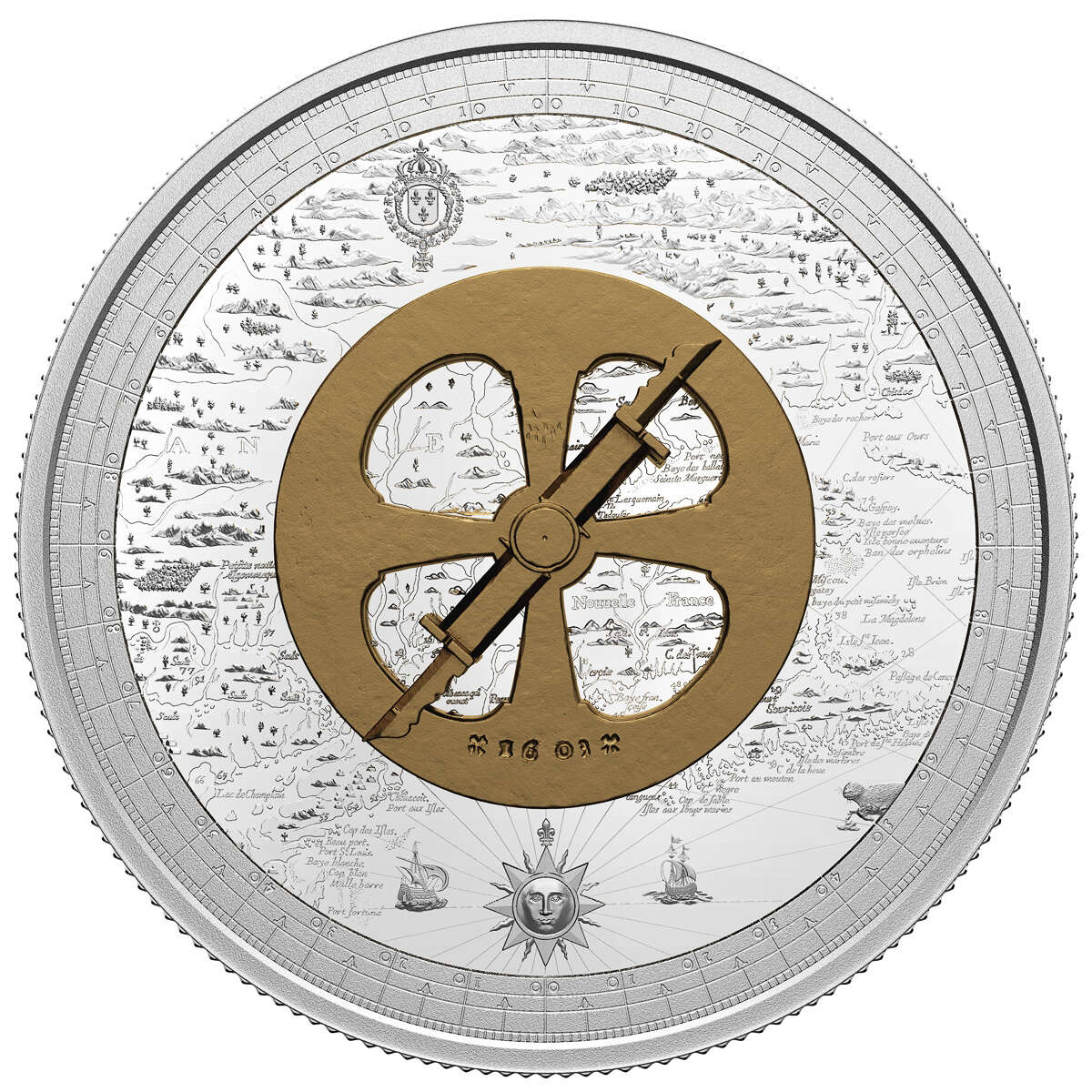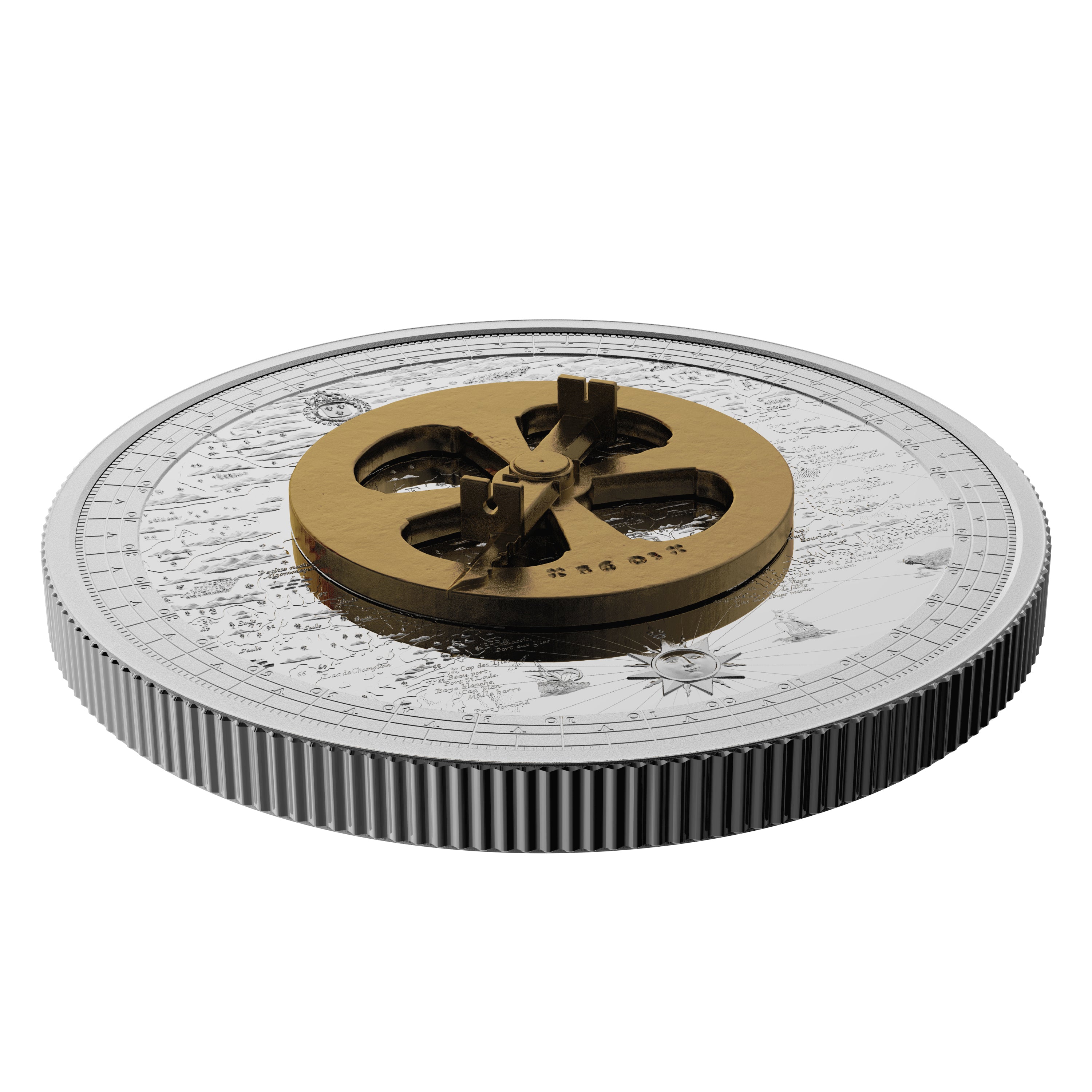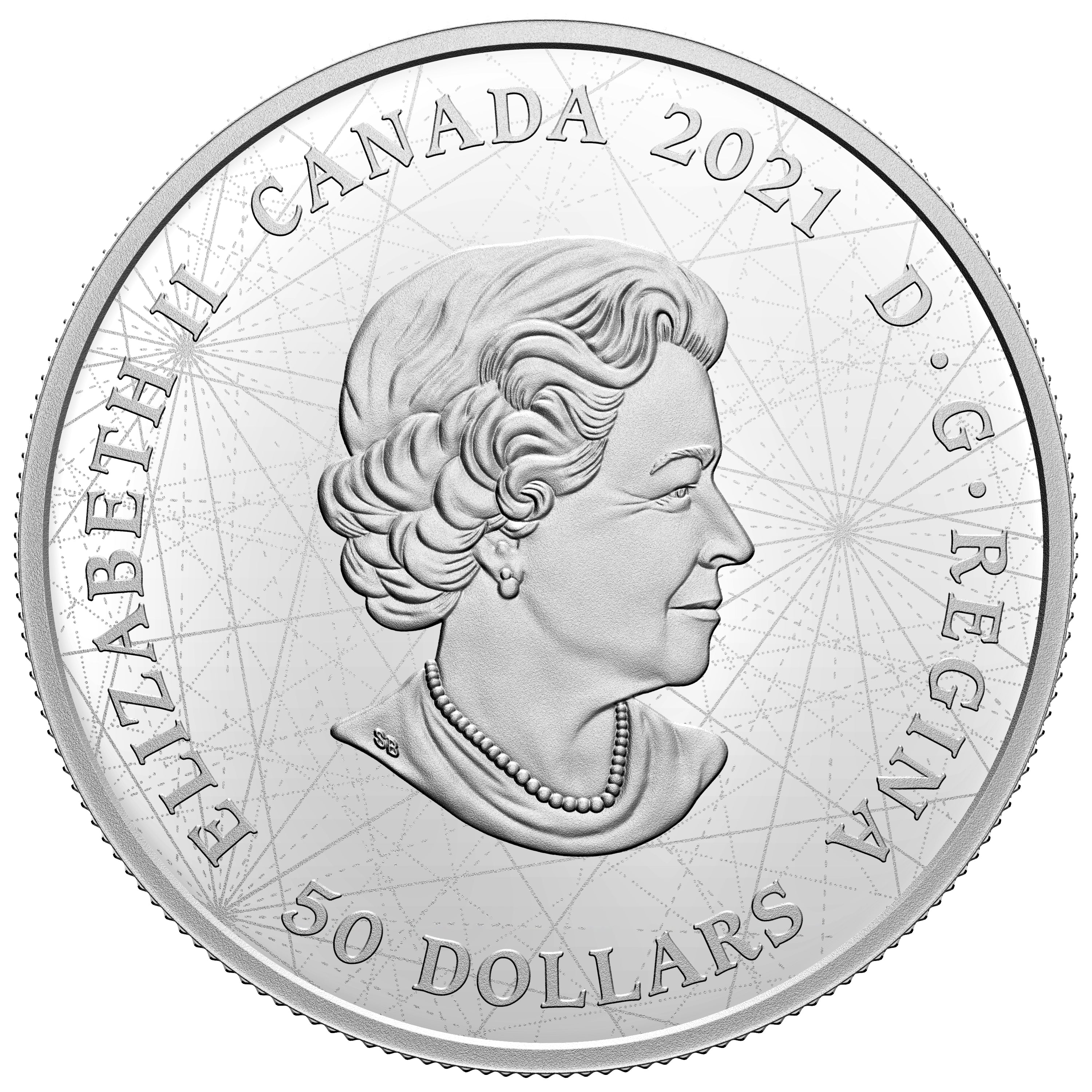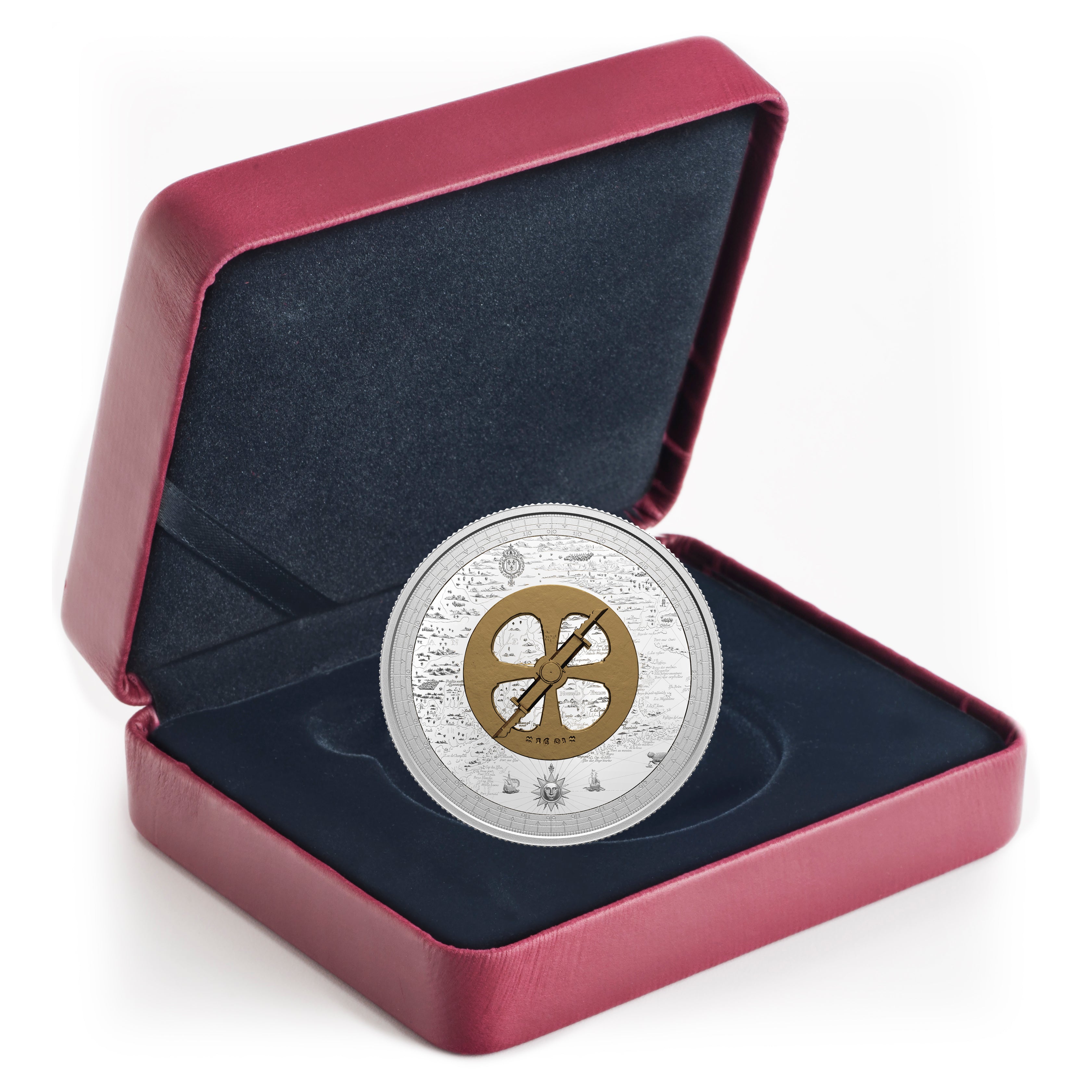Description
This innovative $50 fine silver coin takes us back in time to the 17th century when explorers like Samuel Champlain first came to the new world. This coin features a mariner's astrolabe, a key navigational instrument of the era used to determine latitude. The astrolabe is set against a reproduction of Champlain's 1632 map of New France, which is framed by the astrolabe's graduated scale. Mintage is limited to just 1,000 coins. HST/GST exempt.
The Design:
The design for this coin was inspired by a 17th century mariner's astrolabe found near Cobden, Ontario. The obverse features the effigy of Her Majesty Queen Elizabeth II by Susanna Blunt.
A mariner's astrolabe is a simplified astrolabe. Made of brass or bronze, it was designed for use at sea; its four windows allowed the breezes to pass through while a weight at the bottom kept it steady. It was a common navigational instrument in the 16th and 17th centuries, but only a hundred or so exist today - including the famous one highlighted on this coin.
Did You Know?
Champlain's "lost" astrolabe. This idea sprang forth in the 19th century after the astrolabe's discovery, but Champlain's detailed account of his 1613 expedition up the Ottawa River contains no mention of a lost navigational instrument. Nevertheless, the mariner's astrolabe bears the date '1603' and lay on a rare portage route used by Champlain; the French explorer would have used an astrolabe in his many voyages at sea and while charting the coasts and waterways of eastern Canada. Another theory holds that the astrolabe could have belonged to missionaries or other travellers who used the same route as Champlain.
The astrolabe was found in August 1867. A 14-year-old boy was helping his father clear trees on the shores of Green Lake (now Astrolabe Lake) near Cobden, Ontario, when he unearthed a brass 'disk'. It was sold to a steamboat captain for $10, and the mariner's astrolabe passed through several hands before landing in a New York collection. In June 1989, the Canadian government acquired it and conferred it to the Canadian Museum of Civilization (now the Canadian Museum of History), where it proudly resides.
The astrolabe is missing a piece. The Cobden astrolabe is the smallest of the surviving 17th century mariner's astrolabes and is in excellent condition, except for one missing piece: a small ring to which a weight would be attached in order to steady the instrument. The ring was still intact in an 1879 photograph, so it likely broke off in the late 19th century.
Of the 100 astrolabes that have survived to this day, at least five are known to be in Canada. They include: a Spanish astrolabe (ca. 1565-1600) found in Red Bay, N.L. and held by Parks Canada; the Cobden astrolabe (1603) presumably made in Honfleur, France, and represented on this coin; two astrolabes Ð a French one (1617) and a Portuguese one (1638) discovered at Isle-aux-Morts, N.L. and held at The Rooms in St. John's, N.L.; and a Portuguese one (1632) preserved at the Sulpician Vieux Seminaire in Old Montreal. Another astrolabe (1593) discovered in Cuba by a team of Canadian underwater treasure hunters likely resides in a private collection in Canada.








